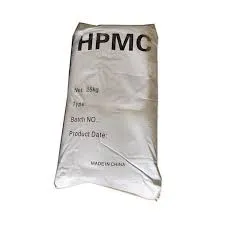
gru . 03, 2024 13:27 Back to list
hydroxypropyl methyl cellulose solubility
Understanding Hydroxypropyl Methylcellulose Solubility Properties, Applications, and Implications
Hydroxypropyl methylcellulose (HPMC) is a widely used polymer derived from cellulose. It belongs to the class of non-ionic, water-soluble polymers, making it an essential ingredient in various industries, including pharmaceuticals, food, cosmetics, and construction. Its versatile properties, particularly solubility, play a crucial role in determining its applications and effectiveness in different formulations.
What is Hydroxypropyl Methylcellulose?
HPMC is produced through the chemical modification of cellulose, which is a natural polymer found in plant cell walls. Through the introduction of hydroxypropyl and methyl groups, the solubility of cellulose is enhanced, transforming it into a water-soluble compound. The degree of substitution of these groups affects the solubility and viscosity properties of HPMC, making it customizable for specific applications.
Solubility Characteristics
HPMC exhibits excellent solubility in water, which is one of its most important attributes. The solubility is influenced by several factors including the temperature of the water, the viscosity grade of the HPMC, and the ratio of hydroxypropyl to methyl groups. Generally, HPMC is soluble in cold and hot water alike, forming a clear, viscous solution, which makes it a valuable component in numerous applications.
The solubility of HPMC allows it to form gels and films, depending on the concentration and temperature. For instance, at low concentrations, HPMC solutions are fluid, while at higher concentrations, they exhibit gel-like behaviors. This property is particularly beneficial in pharmaceuticals for drug delivery systems, where controlled release and viscosity are required.
Applications of Hydroxypropyl Methylcellulose
hydroxypropyl methyl cellulose solubility

1. Pharmaceuticals In the pharmaceutical industry, HPMC is predominantly used as a binder, thickener, and film-forming agent. It serves as a key ingredient in controlled-release formulations due to its gelling properties, which enable a sustained release of active ingredients. The solubility characteristics of HPMC ensure that it can easily dissolve and disperse in bodily fluids, leading to enhanced bioavailability and therapeutic efficacy.
2. Food Industry HPMC is utilized as a thickening and stabilizing agent in various food products, including sauces, dressings, and baked goods. Its ability to enhance texture and maintain moisture levels makes it invaluable in food manufacturing. Furthermore, since HPMC is derived from plant cellulose, it is considered a suitable alternative for vegetarian and vegan products.
3. Cosmetics and Personal Care In the cosmetics industry, HPMC is employed for its thickening and emulsifying properties. It is commonly found in lotions, creams, and gels, where it helps to create a smooth texture and prevents separation of ingredients. The solubility of HPMC in water allows for easy application and effective delivery of active ingredients to the skin.
4. Construction HPMC is also used in construction materials, especially in mortars and tile adhesives. In this context, it acts as a water-retention agent and improves workability, allowing for better adhesion and durability of the materials when applied.
Conclusion
Understanding the solubility of hydroxypropyl methylcellulose is key to optimizing its use across various industries. Its ability to dissolve in water and form gels or viscous solutions makes it a versatile compound suitable for a multitude of applications, including pharmaceuticals, food products, cosmetics, and construction materials. As industries continue to seek efficient and effective ingredients, HPMC remains at the forefront due to its favorable properties and wide-ranging utility.
In summary, hydroxypropyl methylcellulose stands out as a remarkable polymer whose solubility plays a significant role in various formulations. With ongoing research and development, the potential applications for HPMC are likely to expand even further, creating opportunities for innovation across diverse fields. The ability to tailor its solubility characteristics opens new avenues for enhancing existing products and developing novel solutions to meet the demands of consumers and industries alike.
-
Why HPMC is a Key Additive in Wall Putty Formulations
NewsAug.05,2025
-
Redispersible Powder in Decorative Renders: Function Meets Finish
NewsAug.05,2025
-
Redispersible Powder for Interior Wall Putty: Smooth Results Every Time
NewsAug.05,2025
-
HPMC’s Water Retention Capacity in Dry Mortar Applications
NewsAug.05,2025
-
HPMC Factory Contributions to Liquid Detergents
NewsAug.05,2025
-
How HPMC Factory Products Change Detergent Textures
NewsAug.05,2025







